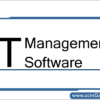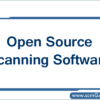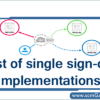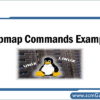
Linux Tutorials: pmap commands examples
You can find the memory used by a program (process) by looking into /proc directory or using standard command such as ps or top. However, you must calculate all memory…
Read more »Linux Tutorials: iostat commands examples
iostat command is a command that used for monitoring system input/output device loading by observing the time the devices are active in relation to their average transfer rates. The iostat…
Read more »
Linux Tutorials: xargs commands examples
Under Development The xargs command is extremely useful when we combine it with other commands.This tutorials explains the usage of xargs command using few simple examples. 1. Xargs Basic Example…
Read more »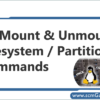
Linux Tutorials: mount & unmount commands examples
Once you create a partition, you should use mount command to mount the partition into a mount point (a directory), to start using the filesystem. You need to add the…
Read more »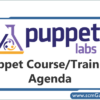
Puppet Training | Puppet Course | Agenda | scmGalaxy
The basic course program is outlined here The Basics Introduction To Configuration Management About The Author Why Puppet? How To Access Your Working Files The Puppet Infrastructure uppet Agents Puppet…
Read more »
Chef Training | Chef Course | Online | Classroom | scmGalaxy
ScmGalaxy is the best contributor to Chef Courses, training, and certification. Our Chef Trainers and advisers are highly equipped with more than 15 years of rich experience in the Software…
Read more »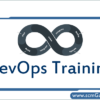
DevOps Training | DevOps Course | Online | Classroom | scmGalaxy
About the DevOps Course DevOps integrates devlopers and operation teams in order to improve collobration and productivity by automation infrastrcure, automationg workflows and continously application performance. DevOps helps You deliver…
Read more »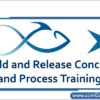
Build and Release Engineer Training | Build and Release Engineer Course | scmGalaxy
About the Build and Release Course Build and Release integrates devlopers and operation teams in order to improve collobration and productivity by automation infrastrcure, automationg workflows and continously application performance….
Read more »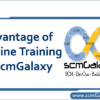
Advantage of Online Training at scmGalaxy | DevOps Training Online | Build and Release Training
Convenient and Easy The Internet provides online training participants with easy and convenient access. Open an Internet browser and employees are up and running quickly. Less “What should be done”,…
Read more »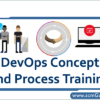
DevOps Concept and Process Training | DevOps Training | scmGalaxy
About the DevOps Course DevOps integrates devlopers and operation teams in order to improve collobration and productivity by automation infrastrcure, automationg workflows and continously application performance. DevOps helps You deliver…
Read more »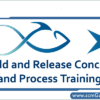
Build and Release Concept and Process Training | Build and Release Training | scmGalaxy
Build and Release Concept and Process Training Software Development Lifecycle In this training, we will understand about the The Software Development Lifecycle and their imporance in Software development. There are…
Read more »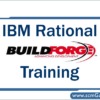
IBM Rational Build Forge Training | Build Forge Course | scmGalaxy
scmGalaxy provide corporate training and consulting in IBM Rational Build Forge. The agenda of the training is as follows; Essentials of IBM Rational Build Forge Training Introduction to the Build…
Read more »
How to Host your own Nuget Feed? | Step by Step Guide | Tutorial
Hosting your own Nuget Feed? 1. Local File Based Package Source Limitation with fles based source – It does not have nuget capable feed. Can not push the package. We…
Read more »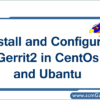
How to Install and Configure Gerrit2 in CentOs and Ubantu ?
Step 1: Update System > yum update > apt-get update Step 2: Install git Step 3: Install screen Step 4: Install screen Step 5: Install Java Step 6: MySQL Step…
Read more »
How to Publish a Nuget package in NuGet Gallery?
How to Publish a Nuget package in NuGet Gallery? Step 1 – Create an account at NuGet.org Head over to http://nuget.org/ and register for an account. Once you do that,…
Read more »
How to create a package in Nuget? | Nuget Tutorial
Hosting your own Repository in Nuget How to create a package in Nuget? Mehtod 1 – From An Assembly If you have an assembly, you can easily generate a nuspec…
Read more »
Jenkins Web References & Cheatsheet
How to take care of a large Jenkins installation and still keep your sanity – Part 1 How to take care of a large Jenkins installation and still keep your…
Read more »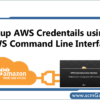
How to Setup AWS Credentials using AWS Command Line Interface?
Setup AWS Credentails using AWS Command Line Interface Install the AWS CLI Using Pip Please click here complete installation guide. Test the AWS CLI Installation [code] $ aws help[/code] Environment…
Read more »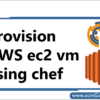
Provision a AWS ec2 vm using chef | Step by Step Guide | AWS ec2 vm Tutorial
Provision a AWS ec2 vm using chef Step 1: Install chefdk Step 2: Setup AWS Credentails Step X: Setup your knife config Step X: Make sure following is set and…
Read more »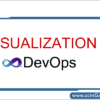
Visualization in DevOps | scmGalaxy
Virtual Machine Manager Vagrant Operating-System-level virtualization & Container Docker Cloud Computing Platforms AWS Azure Google Cloud Vmware Cloud
Read more »
Lyca Mobile Shortcuts
Lyca Mobile Shortcuts To check the balance – *101# | To check the data balance – *136#
Read more »
Mac keyboard shortcuts | Timesaving Shortcuts Mac users Should know
Print Screen – MAC + SHIFT + 4 Desktop – MAC + F3 Power Off – Ctrl + Shift + Power
Read more »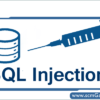
SQL Injection: How to check or test for vulnerabilities
SQJ Injection There are a number of ways of testing an application for vulnerabilities such as SQL Injection. The tests break down into three different methodologies: Blind Injection: MySQL example:…
Read more »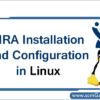
How to Install and Configure Jira in Linux | Jira Tutorial
Download JIRA package from https://www.atlassian.com/software/jira/download?b=j Linux Installation: wget https://www.atlassian.com/software/jira/downloads/binary/atlassian-jira-6.4.12-x64.bin chmod atlassian-jira-6.4.12-x64.bin Execute the ‘.bin’ file to start the console wizard stop iptables service jira start/stop http://uvo1kievugg76unbcj9.vm.cld.sr:8080/ & follow the instructions Reference https://confluence.atlassian.com/jira/installing-jira-on-linux-191501165.html
Read more »



